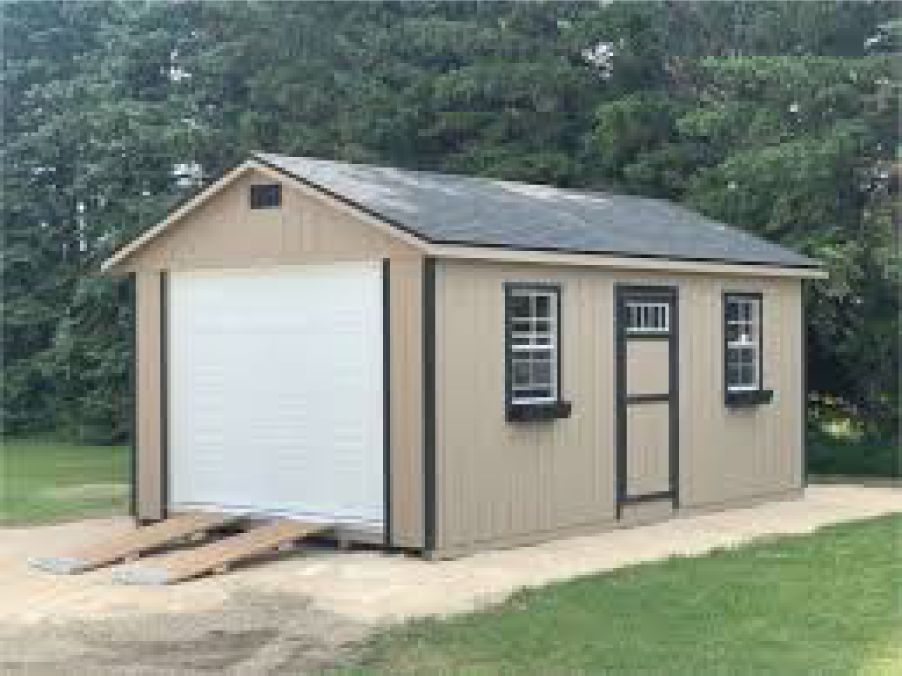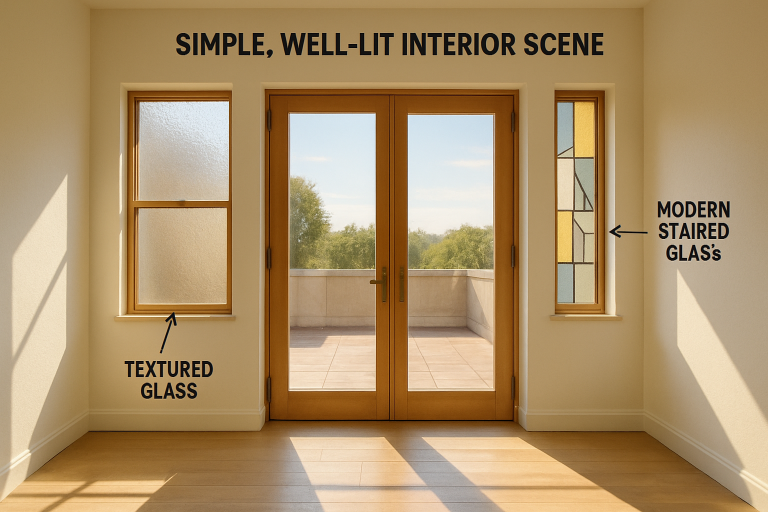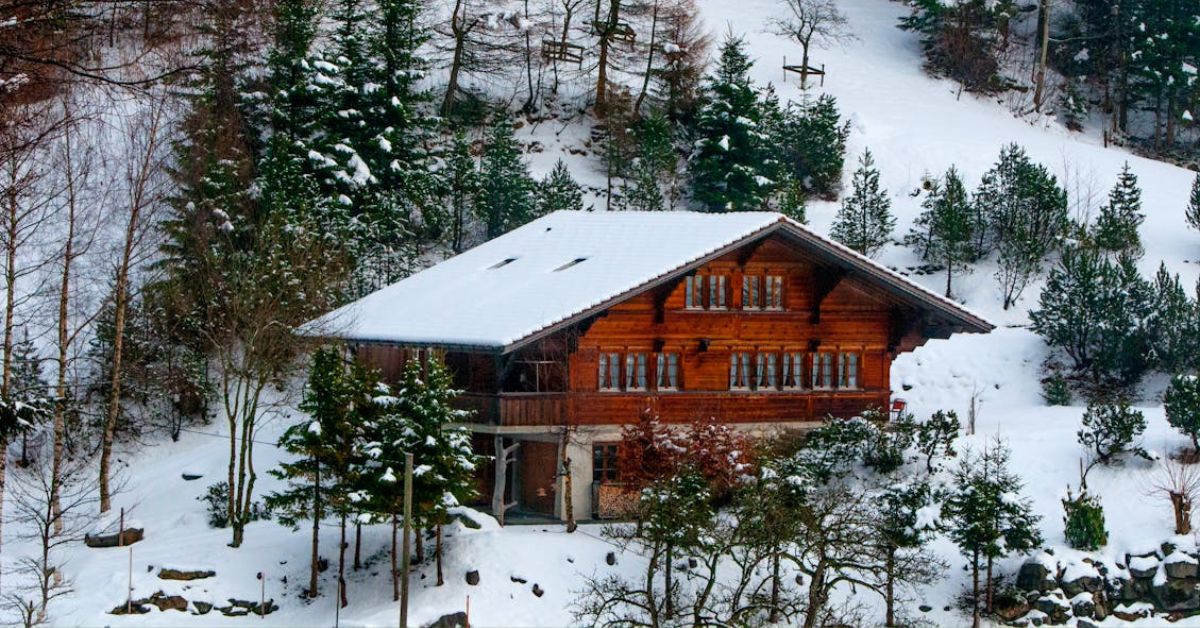As environmental awareness continues to rise, homeowners are increasingly seeking eco-friendly solutions for their living spaces, including their outdoor areas. Backyard sheds, traditionally used for storage, gardening tools, or hobbies, are now being transformed into sustainable and energy-efficient structures. Whether you’re building a new shed or revamping an existing one, there are plenty of ways to make it more eco-friendly. In this guide, we’ll explore sustainable solutions for creating an environmentally responsible backyard shed that benefits both you and the planet.
Choosing Sustainable Building Materials
One of the most impactful ways to make your backyard shed eco-friendly is by choosing sustainable building materials. The materials you select not only affect the shed’s environmental footprint but also its durability and aesthetic appeal. By opting for recycled, reclaimed, and sustainable materials, you can create a shed that’s both beautiful and kind to the environment.
Recycled and Reclaimed Materials
Incorporating recycled and reclaimed materials is an excellent way to reduce waste and minimize your environmental impact. For instance, reclaimed wood from old barns, fences, or pallets can be repurposed for your shed’s walls, floors, or framing. Recycled metal, such as corrugated steel, can be used for roofing or siding. These materials not only give your shed a unique, rustic look but also help divert waste from landfills.
Sustainable Wood Options
If you prefer using new wood, choose options that are sustainably sourced. Look for lumber certified by the Forest Stewardship Council (FSC), which ensures that the wood comes from responsibly managed forests. Fast-growing bamboo is another eco-friendly alternative, known for its rapid renewability and strength. Using sustainable wood helps preserve forests and reduces the carbon footprint associated with your shed’s construction.
Eco-Friendly Roofing
When it comes to roofing, there are several eco-friendly options to consider. Recycled shingles made from post-consumer materials like rubber or plastic are a durable and sustainable choice. For a truly green option, you could install a green roof, covered with plants and vegetation, that provides insulation, reduces stormwater runoff, and supports local biodiversity. Additionally, solar roof tiles are an innovative way to integrate renewable energy into your shed’s design while maintaining a sleek appearance.
With the right materials, your backyard sheds can become a model of sustainability, contributing to a healthier environment.
Energy-Efficient Shed Design
Designing your shed with energy efficiency in mind is another key aspect of creating an eco-friendly structure. By optimizing natural lighting, insulation, and energy use, you can reduce your shed’s energy consumption and create a more comfortable space year-round.
Natural Lighting and Ventilation
Maximizing natural light and airflow is an effective way to reduce your reliance on artificial lighting and climate control. Installing skylights, large windows, and strategically placed vents allows you to take full advantage of sunlight and fresh air. These features not only illuminate and ventilate the shed but also create a more inviting and pleasant environment inside.
Insulation
Proper insulation is essential for maintaining a stable temperature inside your shed, reducing the need for heating and cooling. Eco-friendly insulation materials like wool, cellulose (made from recycled paper), and cork are highly effective and sustainable. Insulating your shed’s walls, roof, and floor will help keep it warm in the winter and cool in the summer, making it a more comfortable space to work or relax in.
Energy-Efficient Lighting
For times when artificial lighting is necessary, consider using energy-efficient options like LED bulbs or solar-powered lights. LEDs consume significantly less energy than traditional incandescent bulbs and have a longer lifespan, reducing the need for frequent replacements. Solar-powered lights are another excellent choice, harnessing the sun’s energy during the day to illuminate your shed at night without adding to your electricity bill.
By incorporating these energy-efficient design elements, you can enjoy a well-lit and comfortable shed while minimizing your environmental impact.
Water Conservation Solutions
Water conservation is a critical component of any eco-friendly outdoor project. Incorporating water-saving features into your backyard shed design not only helps protect this precious resource but also enhances the shed’s functionality and sustainability.
Rainwater Harvesting
Installing a rainwater harvesting system is a simple yet effective way to conserve water. By collecting rainwater from your shed’s roof in a rain barrel, you can use this free resource for various purposes, such as watering your garden, cleaning tools, or even flushing toilets. Rainwater is naturally soft and free of chemicals, making it ideal for use in your garden.
Permeable Surfaces
When planning the area around your shed, consider using permeable materials for pathways and patios. Permeable pavers, gravel, or mulch allow rainwater to seep into the ground, reducing runoff and helping to replenish groundwater supplies. This approach not only supports water conservation but also minimizes erosion and the risk of flooding.
Green Roofs
As mentioned earlier, green roofs offer multiple environmental benefits, including improved water management. The plants and soil on a green roof absorb rainwater, reducing the amount of runoff that reaches the ground. This natural filtration system helps prevent stormwater from overwhelming drainage systems, while also providing insulation and promoting biodiversity.
By implementing these water conservation solutions, your shed can contribute to a more sustainable and resilient garden.
Incorporating Renewable Energy
Integrating renewable energy sources into your shed’s design is a powerful way to reduce its environmental impact. Whether you’re looking to power the shed itself or generate energy for your home, renewable energy solutions offer long-term benefits for both the environment and your wallet.
Solar Panels
Solar panels are one of the most popular and accessible renewable energy options for backyard sheds. By installing solar panels on the roof, you can generate clean, renewable energy to power lights, tools, or other equipment in the shed. Depending on your energy needs and the size of the solar array, you might even produce enough electricity to contribute to your home’s power supply. Solar panels not only reduce your reliance on the grid but also lower your energy bills over time.
Wind Turbines
In areas with consistent wind, small-scale wind turbines can be a viable option for generating renewable energy. These turbines can be mounted on or near your shed and used to power lights, fans, or other electrical devices. While wind energy is less common in residential settings, it’s worth considering if your location has the right conditions.
Hybrid Systems
For maximum energy efficiency and reliability, consider combining solar and wind power in a hybrid system. This approach allows you to harness both sun and wind, ensuring a steady supply of renewable energy regardless of the weather. Hybrid systems are particularly useful in areas with variable weather patterns, providing a more consistent and dependable energy source.
Incorporating renewable energy into your shed’s design is a significant step toward achieving a truly eco-friendly backyard.
Enhancing Biodiversity Around Your Shed
An eco-friendly shed is not just about the structure itself, it’s also about creating a positive impact on the surrounding environment. By enhancing biodiversity around your shed, you can support local wildlife, promote a healthy ecosystem, and create a more vibrant and beautiful garden.
Native Plants
Planting native species around your shed is an excellent way to attract wildlife and reduce water usage. Native plants are adapted to the local climate and soil conditions, requiring less water, fertilizer, and maintenance. They also provide essential habitat and food sources for local wildlife, such as birds, butterflies, and insects. By choosing native plants, you’ll create a garden that’s both sustainable and full of life.
Pollinator-Friendly Gardens
Pollinators like bees, butterflies, and hummingbirds play a crucial role in maintaining healthy ecosystems. Consider creating a pollinator-friendly garden around your shed to support these vital creatures. Choose a variety of flowering plants that bloom at different times of the year, providing a continuous food source for pollinators. Avoid using pesticides and herbicides, as these chemicals can harm beneficial insects and disrupt the balance of your garden.
Bird and Bat Houses
Installing birdhouses and bat houses near your shed can help attract these valuable species to your garden. Birds and bats are natural pest controllers, feeding on insects that can damage your plants. Birdhouses provide shelter for nesting birds, while bat houses offer a safe place for bats to roost during the day. You’ll contribute to a healthier and more balanced ecosystem by welcoming these creatures into your garden.
Enhancing biodiversity around your shed not only benefits the environment but also adds beauty and interest to your outdoor space.
Conclusion
Creating an eco-friendly backyard shed is a rewarding project that offers numerous benefits for both you and the environment. By choosing sustainable materials, optimizing energy efficiency, conserving water, incorporating renewable energy, and promoting biodiversity, you can transform your shed into a model of sustainability. Whether you’re building a new shed or upgrading an existing one, these eco-friendly solutions will help you minimize your environmental impact and create a backyard space you can be proud of.












